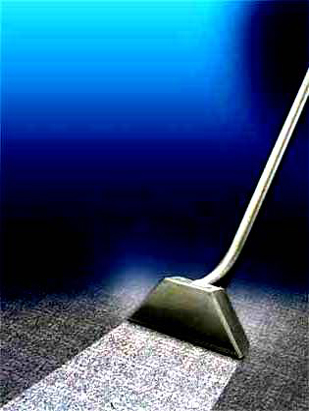|

Stain Removal Methods :
Almost every spot can be removed if immediate and appropriate spotting methods are applied.
The longer the spill is allowed to dwell on the carpet, the more chance there is for permanent discoloration.
The following
stain removal methods work on all kinds of difficult stains. The stain list below indicates which removal method(s) best suit
a particular type of stain. Some stains require special professional care. If the stain is not removed by a prescribed household
method, give us a call at (631) 363-0706
A: Apply a small amount of dry cleaning solvent (Carbona,
Afta). Use small amounts to prevent any possible damage to sizing, backings, or stuffing materials. Do not use gasoline, lighter
fluid or other flammables.
B: Mix one teaspoonful of white neutral detergent (a mild liquid dish washing detergent containing
no strong alkalis or bleaches) with a cup of lukewarm water.
C: Mix one tablespoon of household ammonia with a half-cup
of water.
D: Mix one-third cup of white household vinegar with two-thirds cup of water.
E: Mix a solution of powered
enzyme laundry detergent following label or box directions. Allow the solution to remain on the stain for the length of time
recommended by the manufacturer.
|

Pet
Stain Removal:
recommended by
The Carpet & Rug Institute
Owners of even the best-trained
pets will occasionally encounter pet accidents. Often, the urine is not discovered until long after the accident. The types
of damage from pet stains can be diverse and are dependent upon the makeup of the urine. Urine content will change over the
petís life because of the petís diet, medications, age, health, sex, and reproductive cycles. Because of these variations,
some urine stains may not be removable.
|
|
Beer.............B,D
Chewing Gum....B,C,E
Chocalate....B,C,D,E
Cocktails........B,D
Coffee.......B,D,E,A
Cosmetics......A,B,C
Crayon...........A,B
Egg............B,C,E
Food Coloring....B,C
Fruit Juices B,C,D,E
Furniture Polish A,B
Blood..........B,C,E
Butter.........A,B,D
Candel Wax.....A,B,C
Glue (school)......B
Grease.......A,B,C,D
Ink............A,B,C
Iodine,Methiolate.....B,C,D
Ketchup...............B,C,E
Milk..............B,C,D,E,A
Nail Polish.........A,B,D,E
Paint,oil.............A,B,C
Paint,water...........B,C,A
Perfume.................B,D
Rubber cement...........A,B
Shoe Polish...........A,B,C
Soft Drinks...........B,C,D
Soot..................A,B,C
Syrup...............B,C,D,E
Tar,Asphalt.............A,B
Tea.................B,D,E,A
Urine...................B,D
Vomit.................B,D,A
Water Stains........A,B,C,D
Wine..................B,D,C
|
To treat urine-damaged
areas:
1.Blot damp areas as soon as the urine is detected, with plain white paper toweling.
2.Apply a solution of 1/4 teaspoon of a liquid dishwashing detergent (non-bleach and non-lanolin) with one cup of lukewarm
water. Do not use automatic dishwashing detergent or laundry detergent.
3.Absorb the moisture with paper towel,
rinse with warm water and repeat the application of detergent. Continue rinsing and blotting with the detergent solution and
water as long as there is a transfer to the toweling or improvement in the spot.
4.Follow the detergent application
with a solution of one cup white vinegar to two cups water, and blot dry.
5.Apply a half-inch layer of paper towels
to the affected area, and weigh down with a flat, heavy, non-fading object. Continue to change paper towels until completely
dry.
Urine can affect the dyes used in carpet, although not all occurrences will result in a permanent stain.
Success is dependent upon the content of the urine, the dyes and finish used, and the time elapsed after the deposit. Some
urine spots may be immediately noticeable, while others may take weeks or months for a reaction. The dyes may change color
immediately after contact with urine.
When urine spots develop slowly and are noticed after much time has elapsed,
the dyes and carpet fibers may be permanently damaged. In beige carpet, blue dyes are attacked by pet urine, leaving behind
the red and yellow dyes with a resulting stain appearing red, yellow, or orange.
|
|
PLEASE NOTE:
Never mix ammonia and bleach during any cleaning operation.
Apply with towel and blot only.
Always test solution in an
inconspicuous area of carpet to determine safe application. Rinse thoroughly to prevent residue.
We
suggest that mixture(s) be put in a spray bottle(s).This will avoid over saturation
|
Pet urine, left unattended, can damage carpet in several ways. Moisture can
weaken the layers of the carpet, allowing separation or delamination of the backing material. Seam areas can be particularly
damaged and can separate.
Another problem, especially with cats, is odor. Unless the cat urine can be completely
removed, complete odor removal is unlikely. A number of products are available to combat odor, but may simply mask the odor,
and, in times of high humidity, the odor may reappear. Recently, enzymes, available at pet stores and veterinary offices,
have been developed that are more effective; but they may be better used by a carpet cleaning professional. If odor cannot
be removed, the damaged area of the carpet can be replaced with a piece from reserved scrap. If carpet replacement is necessary,
then replacement of cushion and even subflooring may also be necessary.
Some carpet manufacturers have developed
backings that resist spills and even prevent the spillage from penetrating the carpet into the carpet cushion and, perhaps,
the subfloor. Check with your carpet dealer about these products.
Carpet & Rug Institute
|